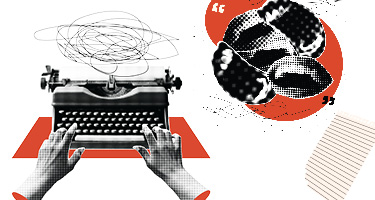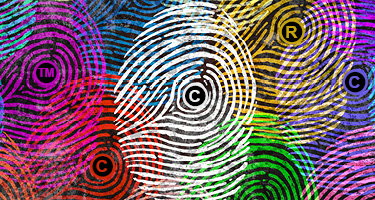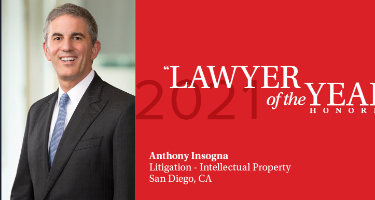Copyrights are a bundle of legal rights belonging to the owner of an original work of authorship. Federal statutes provide that copyright protection subsists in “original works of authorship” that are fixed in any tangible medium of expression. The statute also expressly provides that works of authorship include pictorial works. Original works means that only the original creator has legal rights. Copiers do not have copyrights in what they copy. Works of authorship means there must be originality in the work. While courts typically hold that a minimal amount is required, there must be some creativity in the work.
Copyrightable works include the following categories:
- literary works;
- musical works, including any accompanying words;
- dramatic works, including any accompanying music;
- pantomimes and choreographic works;
- pictorial, graphic, and sculptural works;
- motion pictures and other audiovisual works;
- sound recordings;
- architectural works.
U.S. courts have long held that photographs possess the degree of creativity required for copyright protection because of choices such as posing the subjects, setting, lighting, shading, angles, shutter speed and other camera settings, selection of type of film and camera, and evocation of a desired expression. Because of the creative choices inherent in photography, courts have held that a party need not hold the camera or even push the button to be considered the author. An example would be a photographer who poses the subject, selects the angle and lighting, and arranges every other aspect of the photograph while simply instructing an assistant to push the button to capture the image on command. On the other side of that coin, a party that merely contributes to the photograph through mechanical, noncreative effort does not have claim to the copyrights. And a party may be the author even if he or she does not engage in the physical production of the work at all. One judge explained it like this:
There are sculptors nowadays who work in huge materials, I-beams, storage tanks, things like that, that are welded together where the sculptor’s contribution is rendered entirely by the giving of instructions to workmen to put a member in a certain position and bolt it to another member and so forth. I think it is clear without question that such participation is authorship.
Section 102(b) of the copyright law provides that copyright protection does not extend to any idea, procedure, process, system, method of operation, concept, principle, or discovery, regardless of the form in which it is described, explained, illustrated, or embodied in such work.
Copyrights protect the expression of the idea and not the idea itself. Photography is different from other forms of expression in that a photograph is itself a reproduction of something that exists in the physical world. A photographer who photographs a flower does not create the flower in her mind as a painter or a poet might. Instead, she captures the essence of the flower in her photograph. Many photographers can photograph that same flower. As the Supreme Court said over a hundred years ago, “others are free to copy the original. They are not free to copy the copy.”
Anne Geddes is famous for her photographs of babies in creative poses. One of many examples is her photograph of a tiny newborn held in the hands of an elderly man. It is a beautiful expression of young and old. It would certainly be copyright infringement to copy that photo without permission. But it would not be copyright infringement to take a new photograph of a baby in the hands of an elderly person as long as the new photographer made his own creative choices of subject, lighting, angle and pose.
The issue of recreating a photograph was the subject of an interesting and high profile federal appellate court decision in 2013. A photographer named Donald Harney snapped a photograph of a blond girl in a pink coat riding piggyback on her father’s shoulders coming out of church in Boston. Just over a year later, the father and daughter became a national media sensation because the father had abducted his daughter during a parental visit and was being sought by law enforcement authorities. Harney’s photo was used in an FBI “wanted” poster, and the image was widely distributed in the media. Sony later produced a made-for-television movie based on the story and used a recreation of the photograph, but with the actors in the movie. Harney sued Sony for copyright infringement.
In analyzing whether Sony had infringed Harney’s copyright, the Court of Appeals for First Circuit recognized that it is permissible to mimic the non-copyrightable elements of a copyrighted work. Copyright protection “extend[s] only to those components of a work that are original to the author,” and a work that is sufficiently original to be copyrighted may nonetheless contain unoriginal elements. The Court determined that Sony did not violate any of Harney’s exclusive copyrights, noting that “artists ordinarily have no copyright in the reality of their subject matter” and the news photographer’s stock-in-trade is depicting reality. In so finding, the Court also reemphasized the well-settled principal that a photographer’s original conception of his subject is copyrightable, and those original components include the photographer’s selection of lighting, timing, positioning, angle, and focus. The Court even recognized that photographers make choices about one or more of those elements even when they take pictures of fleeting, on-the-spot events. Ultimately, the Court determined that almost none of the protectible aspects of the photograph were replicated by Sony.
The Courts in other cases have held that it is copyright infringement to recreate a photograph if the photographer copies the protectable portions of a photograph, such as pose, lighting, and angle. For example, a photographer named Art Rogers was commissioned to take a photograph of eight German Shepherd puppies. Rogers made many artistic decisions in creating the photograph, including the decision to include the human owners in the photo, the lighting, the location, the bench on which they were seated, and the arrangement of the puppies. Several years later, a sculptor named Jeff Koons used the photograph to create a sculpture, copying the subjects and the poses from the photograph. The Court determined that Koons infringed Rogers’ copyrights. The Court stressed that it was not the idea of a couple with eight small puppies seated on a bench that was protected, but rather Roger’s expression of this idea—as caught in the placement, in the particular light, and in the expressions of the subjects—that made the photograph original and copyrightable. Had Koons simply used the idea presented by the photo, there would have been no copyright infringement. But because Koons used the identical expression of the idea that Rogers created; the composition, the poses, and the expressions were all incorporated into the sculpture, the Court determined it was copyright infringement.
This article is an excerpt from the book, Protect Your Photographs: A Legal Guide for Photographers, by Maria Crimi Speth, Esq., available on Amazon. Ms. Speth is an intellectual property attorney and chair of the IP group at the Phoenix law firm of Jaburg Wilk. She has expertise in copyright law, trademark law, and Internet law. She focuses on litigation involving intellectual property rights, privacy and First Amendment rights. Ms. Speth is also the author of the book, Protect Your Writings: A Legal Guide for Authors.































